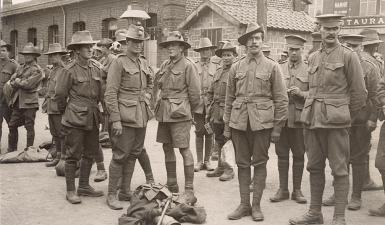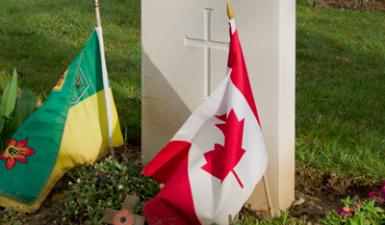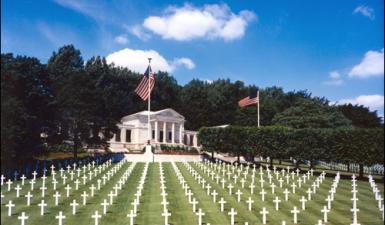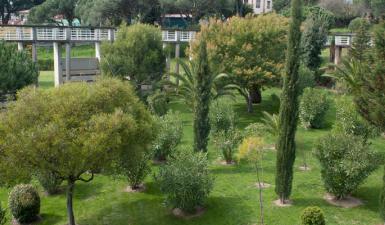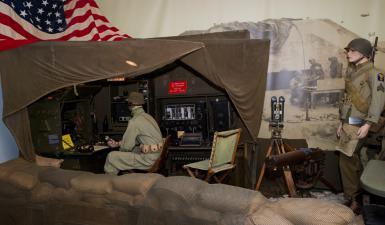Commemoration, a key tool of defence
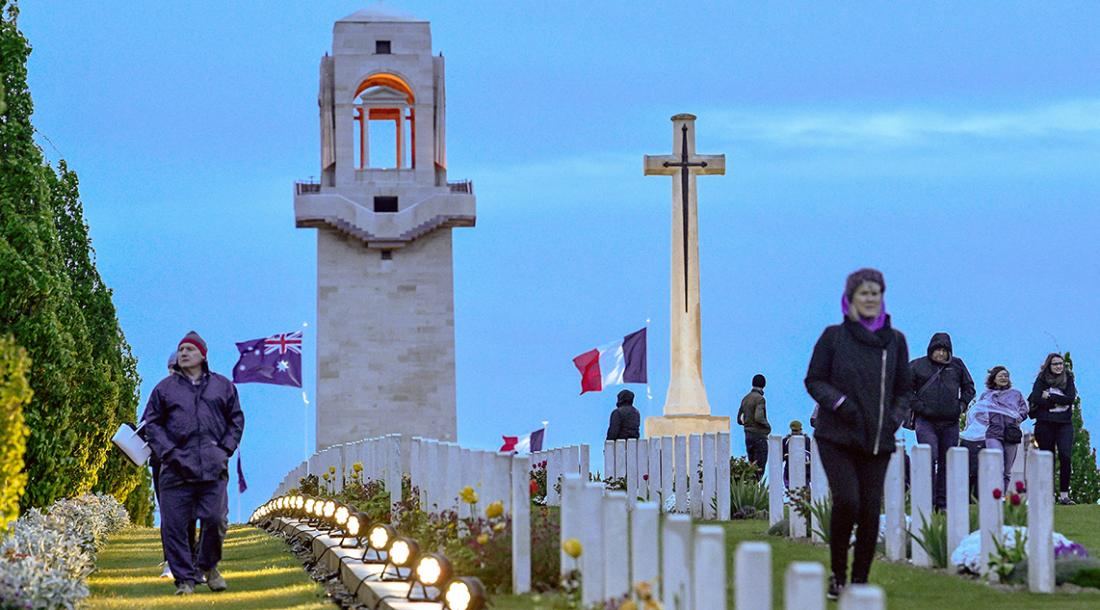
In recent years, France has seen an intense cycle of joint commemorations with foreign nations, our past allies and adversaries, which have altered our view of the past and our commemorative reflexes. These celebrations impact on bilateral relations between States, both guarantors and subjects of remembrance policy. The commemorative act is thus a tool of defence diplomacy, which in many respects transcends its goals.
The use of commemorations as a diplomatic instrument is not a 21st-century invention. As early as 1919, the Victory March of 19 July in London amounted to an inter-Allied parade led by Marshal Foch in celebration of a joint victory, which contributed to strengthening ties between the Allies. Since the 1980s, France has regularly invited representatives from countries around the world to participate in the commemorations, reflecting the fact that the international dimension of contemporary conflicts cannot and should not be ignored.
Commemoration, an enduring, unifying tool in diplomatic relations
Commemorating key episodes of military history with our partners is above all about celebrating peace together. It is about remembering what we fought for yesterday, and what we are committed to preserving today. It is also about reaffirming that our shared goals and interests remain, and hence our ties of cooperation, despite the distance and differences which at times separate past allies today.
That is the message conveyed by France. It is perfectly illustrated by the remembrance partnership between France and the Commonwealth countries, more distant neighbours whose commitment to promoting First World War remembrance has been notable, accounting for nearly 50 of the 267 overseas projects labelled by the French WWI centenary commission, the Mission du Centenaire. A prominent example is Australia, which has developed a special remembrance relationship with France. After an initial memorandum signed in 2003, a second agreement of 2013 reinforced the two countries’ joint actions around First World War remembrance. Under it, metropolitan France and the French overseas territories promote the remembrance of Australian servicemen killed in the two world wars and buried on French soil. In 1938, the Australian National Memorial was erected in Villers-Bretonneux, in the Somme, in memory of the 11 000 Australian soldiers who were killed or went missing in France. Since 1998, Anzac Day has been celebrated there, with a ceremony attended by thousands of Australians and New Zealanders – 8 000 came in 2018 for the centenary of the town’s liberation. In New Caledonia, Franco-Australian ceremonies have been held since the 1980s and 90s to mark Anzac Day. These actions contribute to forging closer ties with the Commonwealth’s regional powers.
Given its historical roots, “shared commemoration” also ensures the continuity of international relations, including – and perhaps especially – in times of crisis. A good example of this is the joint tribute paid by France and Russia to the “Normandie Niemen” squadron, despite the interruption of their military cooperation following the illegal annexation of the Autonomous Republic of Crimea and the city of Sevastopol. France is not alone in pursuing such a policy. We all of us have in our minds the image of US president Barack Obama standing beside Russian president Vladimir Putin on the Normandy beaches, on 6 June 2014, and urging him, after the ceremony, to “ease tensions in Ukraine”. On that occasion, as on others, France, the world’s battlefield during two world wars, succeeded in becoming a key protagonist of remembrance diplomacy, which Matthew Graves rightly defines as a form of “soft power”.
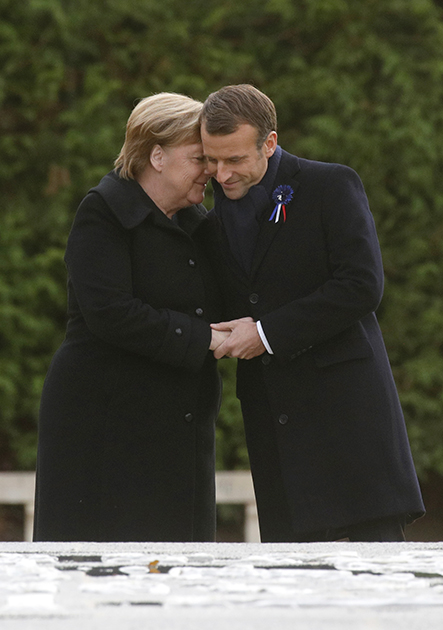
French president Emmanuel Macron and German chancellor Angela Merkel commemorate the armistice of 11 November 1918 at Rethondes, November 2018.
© Philippe Wojazer/AFP
Transcending old conflicts and reconciling memories
If remembrance policy can honour old alliances, it can also transcend past conflicts and strengthen present-day ties, by reviving the memory of their origins.
Enemies in the two world wars, France and Germany have today become key partners, a state of affairs both illustrated and reinforced by their model remembrance relationship.
As in the case of Konrad Adenauer and Charles de Gaulle in Reims in 1962, or François Mitterrand and Helmut Kohl holding hands before Douaumont ossuary in 1984, the Franco-German remembrance relationship has served as a cornerstone of the reconciliation which Aristide Briand and Gustav Stresemann dreamed of. As early as 1974, President Giscard d’Estaing had invited the ambassadors of the two Germanies to the Armistice Day commemorations, when Chancellor Brandt was working towards their rapprochement. The early years of the millennium marked a new phase in that relationship. It was not until 2004 that German chancellor Gerhard Schröder was invited to the commemorations of the D-Day landings, and not until 11 November 2010 that chancellor Angela Merkel joined the French president beneath the Arc de Triomphe. In addition to the dozens of events that have brought French and German leaders together, at a time of conflicting visions of a political Europe, the Franco-German couple have won renown for their unprecedented “commemorative scenes”, for instance at Oradour-sur-Glane, where the French and German presidents came together in 2013, or at Rethondes, the site of the signing of the 1918 and 1940 armistices, where president Emmanuel Macron met Angela Merkel and French and German schoolchildren in 2018.
Outside Europe, France has also implemented a policy of peace and reconciliation with its former colonies through commemorative practices. The memory of the long-ignored mobilisation of colonial troops has been revived in the national memory in recent years. For instance, for the 70th and 75th anniversaries of the liberation of Corsica, in 2013 and 2018, a special tribute was paid to the last surviving Moroccan goumiers. As part of the First World War centenary, the sacrifice of the tirailleurs was honoured through a series of cultural and commemorative events. As for the former colony of Indochina, in November 2018, 25 years after François Mitterand, prime minister Édouard Philippe visited Vietnam to honour the 13 000 dead and missing of the Battle of Dien Bien Phu.
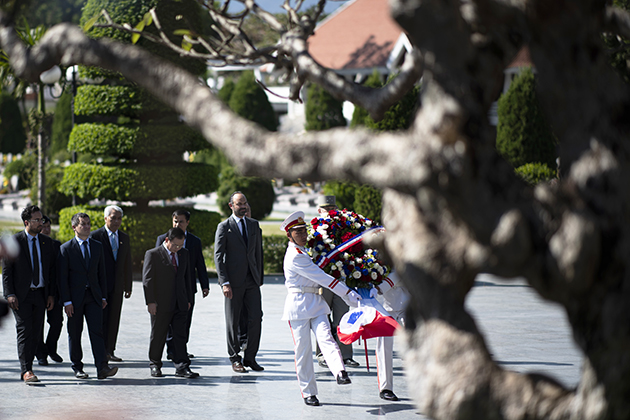
Prime minister Édouard Philippe at Dien Bien Phu cemetery, 3 November 2018. © Jewel Samad/AFP
“Heirs of Remembrance” beyond the borders
Remembrance transcends borders, eclipses circumstances and overcomes conflicts. It also unites age groups, contributing to intergenerational consolidation in diplomatic relations. Indeed, “shared commemorations” foster exchanges between young people from different countries and contribute to passing on the memory of contemporary conflicts. If the involvement of the younger generation can be measured in terms of their participation in international ceremonies (at the 75th anniversary of the D-Day landings on 6 June this year, young people from around the world read texts written at the time by soldiers from their countries), it is also apparent in the implementation of educational projects.
Every year, of the 1 000 educational projects awarded grants by the Directorate for Heritage, Remembrance and Archives (DPMA), around 200 include a trip to an overseas remembrance site. In addition, the calls for projects published by the DPMA are circulated around French lycées throughout the world, via the Agency for French Education Abroad, thereby fostering a double-sided approach to contemporary conflicts. For example, in 2018, the French lycée in Baku, Azerbaijan, responded to the call for projects entitled “Captain Nemo explores defence: from the Nautilus to the SSBN, 150 years of maritime adventure”. To shed light on the involvement of this network, in 2019, as part of the “Heirs of Remembrance” programme, the DPMA awarded a specially created “shared remembrance” award to a class from the French lycée in Casablanca, at a ceremony at the Pantheon with which the DGRIS had the honour of being associated.
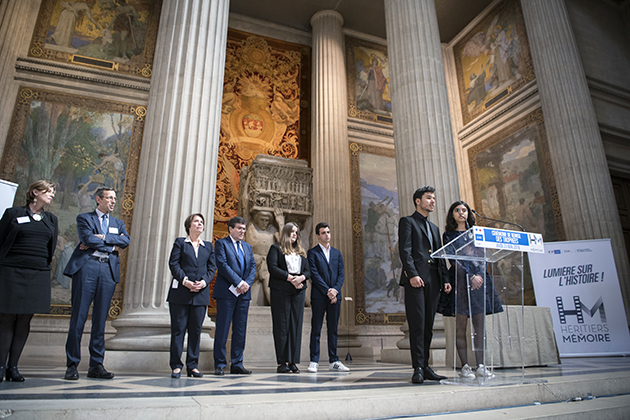
Students of the French lycée in Casablanca receive the “shared remembrance” award as part of the “Heirs of Remembrance” programme, Pantheon, 23 May 2019.
© Arnaud Karaghezian/ECPAD/Défense
Meanwhile, the commemorations have done much to foster school exchanges, particularly as part of the First World War centenary. The “Shared Histories” project came into being in 2013, to promote exchanges between France and New Zealand. Renamed “Young Ambassadors” in 2014, the project has brought young New Zealanders to Europe, to visit remembrance sites in France and Belgium.
Finally, La Fabrique Défense, an initiative involving over 14 500 participants in 80 events across France and Europe between October 2019 and January 2020, was an opportunity to promote the wealth of initiatives put in place by the Ministry of the Armed Forces as part of its remembrance policy. Moreover, this unprecedented initiative for young people further reinforced the intergenerational aspect, as well as successfully highlighting the European dimension, illustrated through the participation of the Swiss, Portuguese and British defence ministers at the event held in Paris on 17 and 18 January 2020, which attracted 6 500 visitors.
Commemorating overseas
Armed conflicts that have seen French involvement are remembered outside France, too, where their memory is particularly tied to stone remembrance heritage. This overseas heritage is maintained by our diplomatic network, in particular our 89 defence attachés covering 166 countries.
Under the aegis of the DGRIS, the defence attachés have wide-ranging responsibilities covering defence policy, intelligence, military cooperation and arms relations. Their mandate also includes remembrance policy, which in some cases constitutes a crucial component of bilateral defence relations. Defence attachés must therefore, on the DPMA’s instructions, ensure the upkeep of French military cemeteries (found in 80 countries), as well as organise official ceremonies and national holidays, which are also commemorated overseas and make an important contribution to France’s global profile. The commemorative cycles of recent years have also given concrete expression to the different instances of remembrance cooperation, in the form of stone monuments. For example, the Ministry of the Armed Forces presented Ireland with a monument, unveiled in 2016 at Glasnevin Cemetery, Dublin, in memory of the Irishmen who fought for the defence and liberty of France, and a French Memorial was unveiled at Pukeahu National War Memorial Park in Wellington, New Zealand, in 2018. So many testimonies of France’s recognition of its former allies.
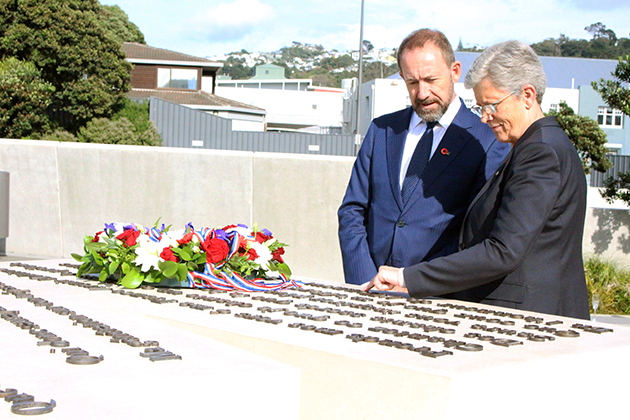
French state secretary Geneviève Darrieussecq and New Zealand’s justice minister, Andrew Little, unveil the French Memorial at Pukeahu National War Memorial Park, Wellington, New Zealand, on 4 May 2018.
© Ambassade de France en Nouvelle-Zélande
Meanwhile, 2020 has seen a number of commemorative cycles in which “shared remembrance” has similarly been a crucial aspect. For instance, the 70th anniversary of the Korean War provided an opportunity to promote the considerable remembrance heritage relating to the UN French Battalion: a plot in the United Nations Memorial Cemetery in Busan, a remembrance trail comprised of 17 steles across the French Battalion’s key battlegrounds, a national monument at Suwon, a Korean monument in honour of military doctor Major Jules Jean-Louis in Hongchen, and a plaque and commemorative pillar at the War Memorial of Korea, in Seoul. In addition, the memorial in Paris to the men of the Korean battalion will gain a plaque bearing the names of those killed between 1950 and 1953, due to be unveiled in October.
The diplomatic side of the commemorations offers an opportunity to come together to remember our nations’ involvement in contemporary conflicts, with a focus on a shared future of peace, and respect for different remembrance cultures. The shared commemorations of recent years are set to be continued, to maintain the crucial bond between past allies and adversaries, and draw on the commemorative practices of our partners with a view to innovation.


